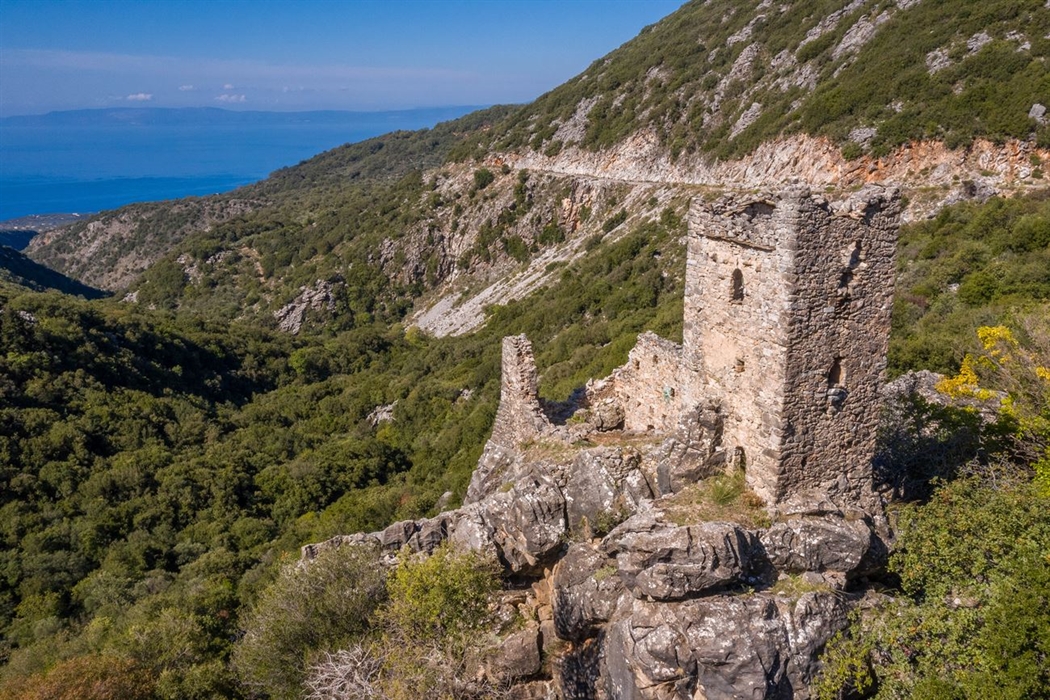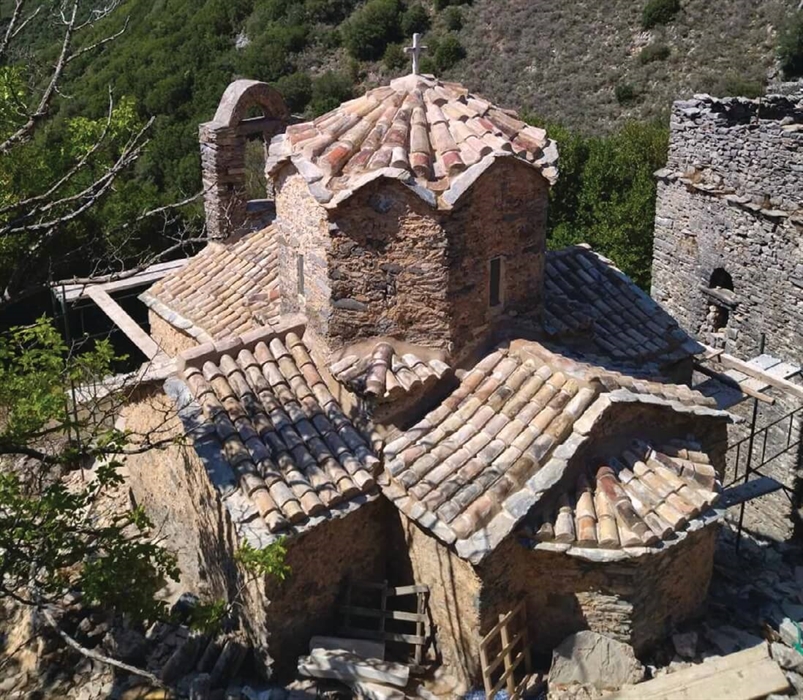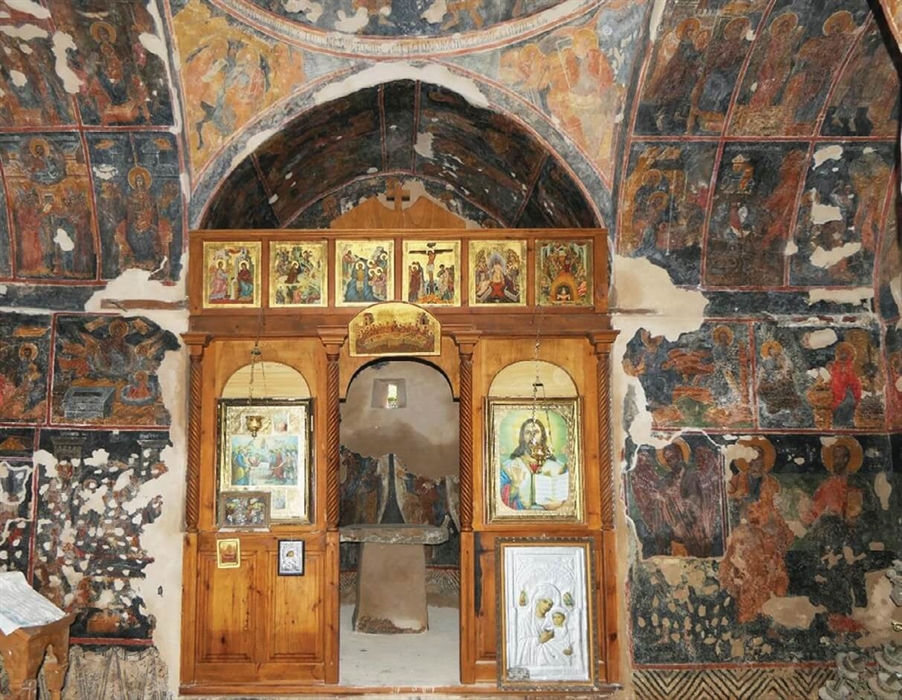These three sites are all near to the Foneas gorge, Kardamyli. They all share hundreds of years of dramatic history between them, and they are all fortified structures as in the past they played a major role in protecting villagers from invasions and helping them to defend their lands.
These three sites are all near to the Foneas gorge, Kardamyli. They all share hundreds of years of dramatic history between them, and they are all fortified structures as in the past they played a major role in protecting people from the nearby villages and helping them to defend their lands. All three sites are up in the hills and not that easy to get to, so if you’re feeling adventurous and looking for something which is literally “off the beaten track” then head up to Saidona.
You can reach the Samuil Monastery by taking the main road from Saidona to Exochori and then taking the dirt track signposted Dasos (wood) Vasilikis, or parking at the side of the road just after the track and taking the short (not too clear) path up to the monastery. Whichever way you go, take a minute to drink in the clear mountain air and admire the view. The abandoned, ruined monastery is the perfect place to let your imagination run wild. You can almost hear the noise from the blacksmith workshop inside the walls, where the monks repaired agricultural tools for the villagers, and weapons for the Klephts, the war-like groups of men who lived in the mountains and fought against Ottoman rule. The church, which is dedicated to the Dormition of the Virgin Mary, is in relatively good condition and you can also see a tower at the entrance along with quite a lot of the defensive walls. A written inscription tells us that in 1633 a monk named Samuel either founded or painted frescos on the church – hence the name. Monks lived here until the interwar years.
The Kitriniaris family fort is built on a rock 700 meters above sea level and is just beside the main Saidona to Exochori road. The view from here is amazing, which is not surprising as it was chosen as a strategic site that allowed the Kitriniaris family to see the entire surrounding area, right up to the coast. The tower is in ruins now, so be careful as you enjoy exploring! You’ll be able to see the three-story tower and another two-story building. It is an interesting example of the fortified architecture which was built in the area during the 18th century, with small and irregularly placed openings on the facades and a roof with a parapet and battlements. The Kitriniaris family were very powerful in the area during the second Turkish occupation, and were able to control the road from Kastanitsa to the area of Lefktro thanks to this tower. The tower is now a listed monument.
The Vaidenitsa monastery was founded in the 18th century, but the building you can see today dates back to the 19th century. Its name comes from the Slavic word "voda" meaning water and then from its derivative "vodonitsa" meaning mill/water mill. This makes sense as there are six old water mills near the monastery. These mills, powered by the Noupanti River, played a vital role in the area right up until the Second World War. Like most monasteries in the area, Vaidenitsa is fortified with walls and a tower. The church, with its wood-carved iconostasis from 1865, is dedicated to the Nativity of the Virgin Mary.
Find the destination on the interactive map below. Open on Google Map.
Σχετικό περιεχόμενο χρηστών (UGC)
Ενημερωθείτε για ενδιαφέροντα θέματα γύρω από τον προορισμό μέσα από το περιεχόμενο των χρηστών μας
Newsletters
- About Us
- FAQ's
- Map
- Tourism Information Centers
- Disclaimer
- Sitemap
- Our Brand
- Media Room
- Add your Business
- Corporate
- MICE

Peloponnese. The land of impossible beginnings





Design and creation from Cosmote
Marinas and Moorings
Diving Centers
Get Inspired
- Media Gallery
- Peloponnese Travel Blog
- The Peloponnese in the Media
- Your Feedback
- Users' General Content
- Users' Local Products
- Users' Events Content
- Ask a Local
More
- My peloponnese vibe
- Our providers Network
- Destinations Map
- Weather
- Public Transport
- Frequently Asked Questions
- Useful Phones
- B2B
- Destination Statistical Data
- Contact





